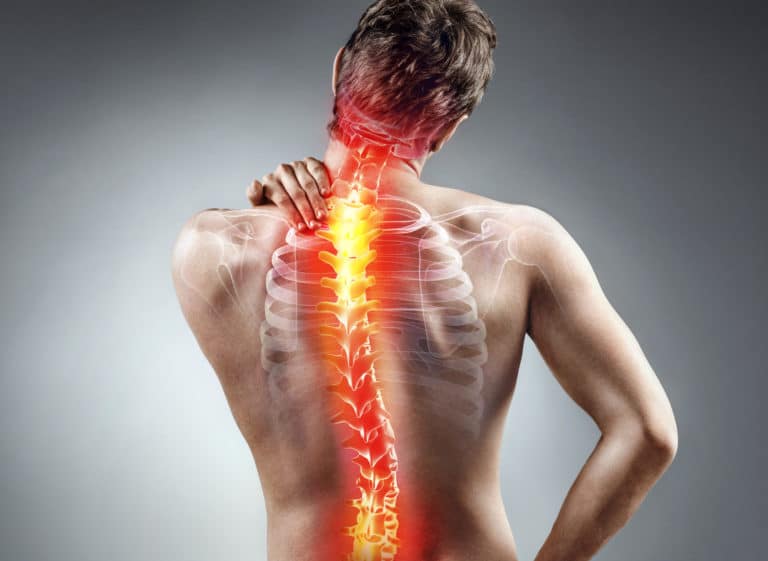Do you suffer from a painful curvature of the spine? Has your doctor diagnosed you with scoliosis? Have you ever wanted to learn more about scoliosis and how it affects your lifestyle?
The American Association of Neurological Surgeons states that approximately 80% of scoliosis causes are unknown. Not to mention, over 600,000 people with scoliosis visit their primary care physicians each year!
Scoliosis can limit your life in many ways, and it is vital to be educated on the basic facts. Whether it is for you, or someone you love, knowledge is a powerful tool.
Experts like Momentum Medical have the tools and knowledge to get you back on track.
Scoliosis can become a severe and chronic condition. Keep reading to find out more about these scoliosis facts before you begin treatment!
What Is Scoliosis?
Scoliosis is defined as an abnormal curvature of the spine. A normal-shaped spine will have a curve at the lower back and a curve at the top of the shoulder.
Typically, if your spine takes the shape of an “S’ or a “C,” then you could have scoliosis.
Usually, scoliosis is detected within the first 7 years of life if it is significant enough. However, mild cases often go undetected until later in life, often discovered by accident.
Symptoms of Scoliosis
Symptoms of scoliosis can vary depending on the severity but can include the following:
- Shoulder blades are an uneven height
- One shoulder blade sticks out further than the other one
- Back pain
- Unevenness in the hips
- Breathing problems
- Rotation in the spine
- The head is not centered above the pelvis
- Dimples or skin patches over the area of spine abnormality
A majority of people tend to have back pain, which leads them to visit their doctor and be diagnosed.
Types of Scoliosis
Scoliosis falls under two main categories: structured and nonstructural. Structured scoliosis is the most common and affects the structure of the spine. It involves side to side rotation curvature of the spine.
Examples of structured scoliosis are:
- Idiopathic scoliosis is the most common type. With idiopathic scoliosis, the cause is unknown.
- Degenerative scoliosis is otherwise known as adult scoliosis. This occurs later in life as bones and joints change and degenerate.
- Congenital scoliosis occurs in utero from malformations in the vertebrae.
- Neuromuscular scoliosis happens in people who cannot walk from conditions like muscular dystrophy, polio, or cerebral palsy.
- A paralytic curve usually results from a traumatic injury that damages and curves the spinal cord.
Unstructured scoliosis is functional scoliosis that results from a temporary cause. For example, you could lay down flat on your bed if you have unstructured scoliosis, and the curve would go away.
Causes of nonstructural scoliosis include:
- Muscle spasms in one of the major muscles in the back.
- Differences in leg lengths can cause the spine to start curving.
- Inflammation from conditions like pneumonia or anything where the side of the spine becomes inflamed for any reason
Facts About Scoliosis
What facts do you know about scoliosis? For example, did you know that it is the most common spine abnormality in children?
Most cases of scoliosis have no known cause, though researchers suspect there could a genetic link, as it can run in families.
Some other interesting facts:
- Disc generation can cause adult scoliosis. As discs begin to wear out, the spaces and shapes between the bones can change, causing curvature of the spine.
- Scoliosis can cause significant health problems such as trouble breathing, pain, and leakage of spinal fluid.
- A brace can be a very effective treatment for children. The technology used to designed braces has come a long way, and they can prevent the curvature from becoming worse over time.
- Spinal surgery can actually be beneficial for older teens and adults.
- You can still play sports! Olympic athletes such as Usain Bolt and Natalie Coughlin have been able to win Olympic medals and have successful careers!
Your physician will recommend regular physical activity and light exercise to strengthen your core muscles.
Scoliosis Treatment
Once you are diagnosed with scoliosis, you will likely be referred to see an orthopedic doctor. Treatment can vary depending on age, type of scoliosis, and severity of symptoms.
Usually, treatment options will fall under 3 categories:
- Observation for some time
- A nonsurgical option, like a brace for your back
- Surgery is usually recommended for significant curvatures between 40 and 50 degrees. This operation involves a spinal fusion.
Your doctor will also consider other options such as over-the-counter medications, physical therapy, light exercise, and stretching. In addition, you might be offered options such as nerve blocks or more potent prescription medications for severe pain.
Consider a Chiropractor
How can a chiropractor help you with your scoliosis pain? Chiropractic care is proven to help with the alignment of your spine as well as joint pain.
Chiropractic care alone does not take scoliosis away, but it does provide significant benefits for your pain and quality of life.
It can allow your joints to have more mobility, which will lessen your pain and help your posture. These minor improvements weave together and can transform not only your quality of life but your self-image too.
Now You Know the Scoliosis Facts
Now you have some basic scoliosis facts under your belt, you can feel more comfortable in taking the next steps.
Our experienced professionals at Momentum Medical can help you today. You can book an appointment by choosing one of the patient intake forms that are available or call us at 1-855-944-1747.
Take control of your own recovery curve now. You will soon be on the road to a more confident life while feeling less pain!

